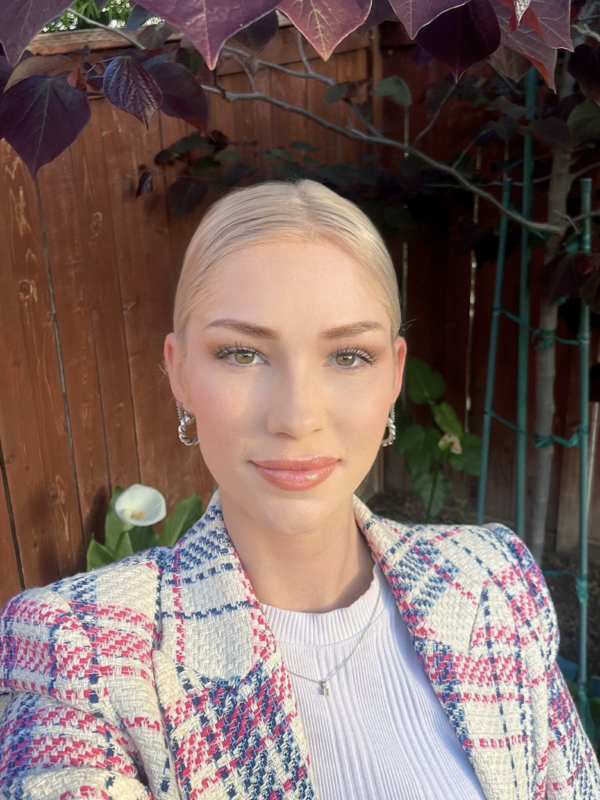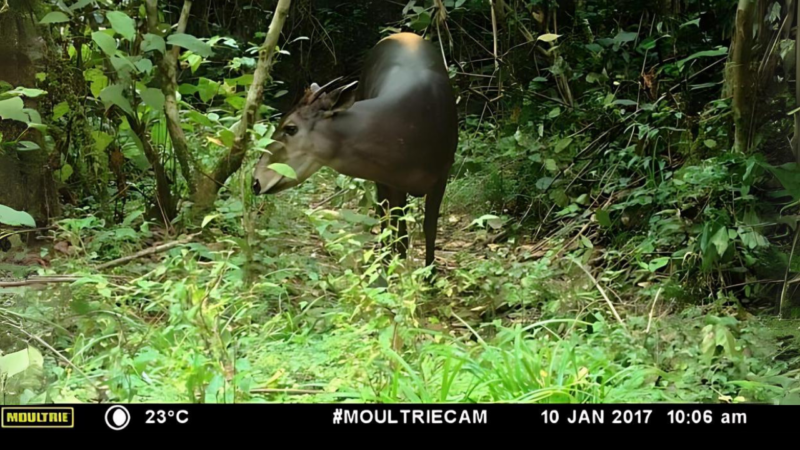
Story
Chester’s Way: A squirrel’s tale of community and conservation
The natural world is a complex tapestry, woven with intricate relationships between species and their environments. Children's literature offers a unique platform to introduce young minds to these concepts in an engaging and accessible way.
David Colgan, Director of Communications at UCLA Institute of the Environment and Sustainability, has taken on this challenge with his new children’s book, Chester’s Way.
Inspired by a real-life squirrel, Colgan weaves a tale of friendship, community, and ecological balance. Through the eyes of Chester the squirrel and his unlikely companion, a young girl named Suzie, the book invites readers to explore the wonders of the natural world while fostering a sense of responsibility for its care.
In this Q&A, Colgan shares insights into the genesis of the book, its underlying message, and how storytelling can address environmental anxiety in children.
What inspired you to write Chester’s Way, and how did the character of Chester come to life?
Colgan: Chester came directly from a real-life squirrel my colleague Susan Holcomb feeds at her home. The squirrel became bold over time, even coming into her living room. A few years ago, as Susan and I were carpooling to a UCLA event with La Brea Tar Pits, she mentioned that she was worried about Chester.
He was taking more and more nuts but looking thinner and scragglier. Why that was happening became the mystery that got me thinking about a plot for a children’s book. What was he doing with all those nuts?


How did you develop Chester’s unique personality and the setting of Echo Glen?
There are plenty of great children’s books with traditional heroes — charismatic, adventurous characters. Chester’s personality represents unsung heroes. He’s less social, more routine-oriented. But he fits right into his community and ecosystem in an important way.
In my head, Echo Glen is simply what I imagine Santa Monica might look like if it was much more rural. It’s where the real Chester lives, so it made sense to let that be the backdrop. Other places in the book represent nearby locations, such as parkland in Topanga Canyon and Temescal Canyon. But that’s just me. I’m sure kids will imagine their own settings.
Who is your target audience for Chester’s Way, and how did you ensure the book is both engaging and informative?
The book is aimed at children ages 3-10, but the idea is for it to be read to young kids and read by older ones. I learned the English language using context clues to understand words I didn’t know, so I didn’t oversimplify the language too much in hopes young readers will do the same.
The main conservation theme is interconnectedness. Along with complexity, it’s a common thread in nearly all ecology research I’ve written about at UCLA. The importance of seed dispersers is one key element of the plot. For the sake of a children’s book, though, I had to keep it simple.
I’m sure I didn’t get all the ecological realities perfectly right, but I did look up what nuts squirrels typically eat, tree species in California, and other natural elements. The main antagonist of the story is a stray cat — in urban settings, I know they can be a problem for small mammals.


What message do you hope children will take away from Chester’s Way? How do you envision the book contributing to the broader conversation about environmental anxiety in children?
I hope kids come away from the book identifying with Suzie, an animal lover, and with Chester. Chester doesn’t quite fit in with the highly social squirrel community, but he is doing his part.
Environmental anxiety can be a powerful thing as we watch climate change advance. It can feel like we never do enough. I don’t think that helps anyone. Everyone has a role to play as we navigate serious global threats, but no one can take it all on alone.
How can parents and educators use Chester’s Way to spark interest in environmental stewardship?
I think they can talk about all kinds of conservation things around the book, but more important to me is what takes place in kids’ imaginations. Hopefully, they come away from the story feeling good about themselves. Kids’ own interpretations matter more than any explicit lesson.
The themes of the book are gentle. I doubt most will recognize they are there. I didn’t want to just preach to the environmental choir — we are all part of nature and we all need to be a part of environmental action.


Can you discuss your collaboration with the book’s illustrator and touch on the importance of diverse representation in children’s literature?

I lucked out there. I have a good childhood friend who is a high school art teacher, and he introduced me to Niara Fullard. The way she brought the story to life with full-page, full color illustrations still amazes me. The book is worth checking out just for that.
How Niara illustrated Suzie is one of my favorite parts. When I used to read stories to my daughter, she would make me change the gender of the main characters because so many stories are written with boys as the heroes. She wanted to be the hero.
We did something similar with racial representation. Niara cleverly illustrated Suzie so readers can see her as Black, white, Latina, Indian — almost any background. We hope that helps more young girls identify with the character.
How does your work at UCLA IoES influence your writing, and what do you hope Chester’s Way will inspire in young readers?
I spend a lot of time translating complex research for a non-technical audience. Writing a children’s book isn’t so different. It’s that old writer’s chestnut that you write everything so an eight-year-old can understand it.
I do think Chester’s Way can become part of kids’ internal narratives in a way that drives them to care for nature — without getting overwhelmed by huge, global problems like climate change. It’s not that I want them to ignore those problems, though — I hope kids realize we need to work together to take on such big issues.


To purchase a copy of Chester’s Way, visit IngramSpark or Amazon.




